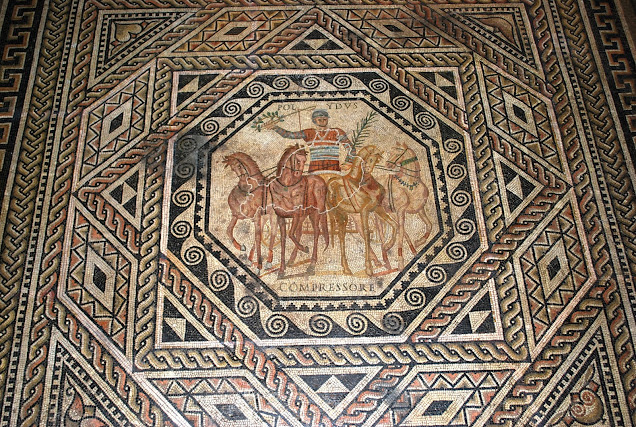In search of the Theater of Herod in Jerusalem
 Tomorrow, I will travel to Jerusalem in search of the Theater of Herod. It seems quite an achievement to find any remains of the theater in this city, so packed with memorabilia of world class. But maybe the reason is simple. Scholar Patrick Joseph proposed in 2003, that Herod's theater in Jerusalem was a temporary wooden structure, in line with contemporary practice at Rome during that time. Remains are therefore ... zero. Also read my message ‘Luxe penthouse in Rome’.
Tomorrow, I will travel to Jerusalem in search of the Theater of Herod. It seems quite an achievement to find any remains of the theater in this city, so packed with memorabilia of world class. But maybe the reason is simple. Scholar Patrick Joseph proposed in 2003, that Herod's theater in Jerusalem was a temporary wooden structure, in line with contemporary practice at Rome during that time. Remains are therefore ... zero. Also read my message ‘Luxe penthouse in Rome’. The theater is mentioned in the writings of Flavius Josephus only in conjunction with the celebrations in honour of Augustus instituted by Herod in the city in 28 BC. But it is not mentioned at all in the lengthy descriptions regarding the Great Jewish Revolt, which are full with topographical data. As for its decorations, Flavius Josephus plainly says that they were covering a wooden scaffolding; they were not relief work in stone. Indirect proof in favour of Patrick Joseph's proposal are Flavius Josephus' records concerning inauguration of the theater at Caesarea, in 10 BC. Speaking about Herod's building projects in that city, he comments that the theater was of stone. Seemingly it was a noteworthy architectural innovation.
Nevertheless, I will investigate this riddle, while also Strabo and Dio Cassius, among others, mentioned the building. But probably the artist impression shown in this message is not more than a fantasy.
More information about this 'temporary' theater, you can find in the Journal: 'Qatedrah le-tôldôt Eres Yísra'el el we-yîššûbah. ISSN 0334-4657; Source: 2003, no.110 (11 page(s) [article]), (Note(s): 19-28, 189 [11 p.]). In Hebrew.



Reacties
Een reactie posten